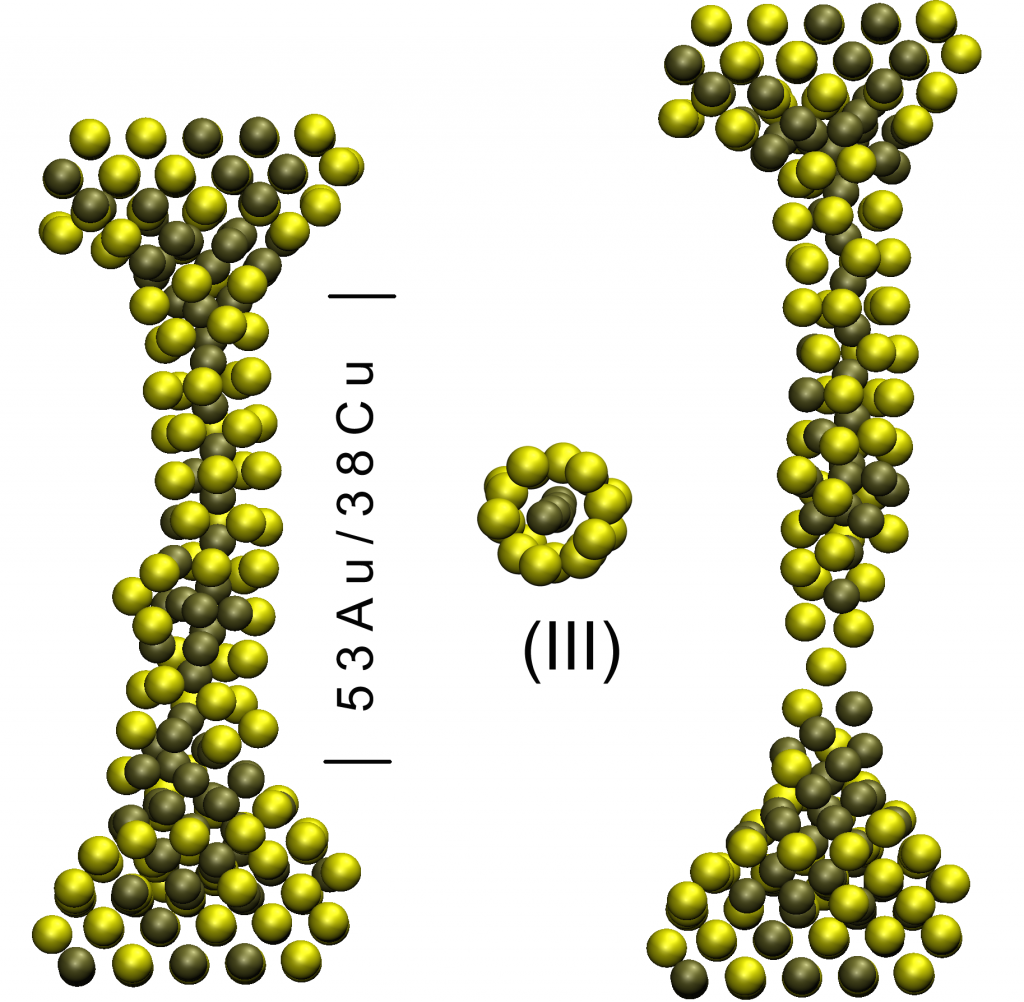Efeitos da superfície no processo de formação de cadeias atômicas lineares

Artigo publicado no Journal of Applied Physics (JAP), em colaboração com o grupo do professor Daniel Ugarte, apresenta como a superfície tem papel preponderante na formação e composição de cadeias atômicas lineares e no processo de “de-alloying” (em tradução livre como sendo o processo de segregação de determinados átomos em uma liga) quando nanofios compostos por uma liga de ouro e cobre são esticados. Apresentamos também as implicações desta descoberta na nanocatálise e transporte de spin.
Artigo completo pode ser lido no link a seguir:
Lagos, MJ; Autreto, PAS; Bettini,; Sato,; Dantas, SO; Galvao, DS; Ugarte,
Journal of Applied Physics, 117 (9), pp. 094301, 2015.
We report here an atomistic study of the mechanical deformation of Au x Cu (1− x ) atomic-size wires (nanowires (NWs)) by means of high resolution transmission electron microscopy experiments. Molecular dynamics simulations were also carried out in order to obtain deeper insights on the dynamical properties of stretched NWs. The mechanical properties are significantly dependent on the chemical composition that evolves in time at the junction; some structures exhibit a remarkable de-alloying behavior. Also, our results represent the first experimental realization of mixed linear atomic chains (LACs) among transition and noble metals; in particular, surface energies induce chemical gradients on NW surfaces that can be exploited to control the relative LAC compositions (different number of gold and copper atoms). The implications of these results for nanocatalysis and spin transport of one-atom-thick metal wires are addressed.


Comentários